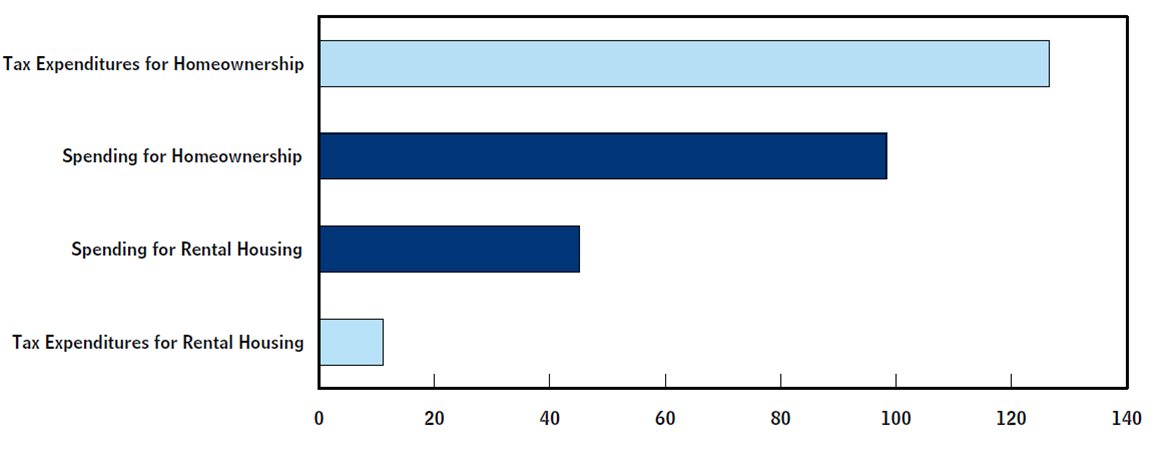CBO’s Budgetary Treatment of Fannie Mae and Freddie Mac
Thursday, January 14th, 2010 by Douglas ElmendorfAfter the U.S. government assumed control of Fannie Mae and Freddie Mac—two federally chartered institutions that provide credit guarantees for almost half of the outstanding mortgages in the United States—CBO concluded that the institutions had effectively become government entities whose operations should be included in the federal budget. In contrast, the Administration, which ultimately determines what is included in the budget, considers Fannie Mae and Freddie Mac to be nongovernmental entities for federal budgeting purposes. Because of the differing budgetary treatments, CBO’s and the Administration’s budget estimates related to the entities were quite different for 2009 and over the 2010-2019 period. A background paper released today describes CBO’s budgetary treatment of Fannie Mae and Freddie Mac and the methods CBO used to estimate their costs.
Despite having a unique legal status and a long history linking them to the federal government, Fannie Mae and Freddie Mac have been considered private firms owned by their shareholders. However, with the entities facing substantial losses that threatened their solvency, the government took control of Fannie Mae and Freddie Mac through its authority under the Housing and Economic Recovery Act of 2008 (HERA). The federal government now exercises an extraordinary degree of management and financial responsibility over them. CBO believes—consistent with the principles outlined in the 1967 Report of the President’s Commission on Budget Concepts—that it is appropriate and useful to policymakers to account for and display the entities’ financial transactions alongside other federal activities.
CBO’s Approach
In the baseline budget projections it published in 2009, CBO accounted for the cost of the entities’ operations in the federal budget as if they were being conducted by a federal agency. That is, CBO treated the mortgages owned or guaranteed by Fannie Mae and Freddie Mac as loans and loan guarantees of the federal government. The operations of Fannie Mae and Freddie Mac added $291 billion to CBO’s August baseline estimate of federal outlays for fiscal year 2009 and $99 billion to the spending projected for the 2010–2019 period.
The estimated outlays for Fannie Mae and Freddie Mac represent the subsidy cost (in other words, the long-term cost to the federal government) of those entities transactions. CBO estimated that cost by projecting the net cash flows associated with the two entities’ mortgage commitments and converting those estimates into present values using risk-adjusted discount rates. (The discount rates reflect the expected rate of return that the government could earn on investments or securities of comparable risk.) That procedure is conceptually equivalent to the methods that private companies use to compute the fair value of certain assets and liabilities under generally accepted accounting principles.
The large 2009 figure reflects the recognition of substantial losses on the approximately $5 trillion in mortgages held or guaranteed by the entities at that time. Following the housing bust that began in 2007, Fannie Mae and Freddie Mac experienced unprecedented portfolio losses stemming largely from their holdings of risky private securities, such as securities backed by subprime and Alt-A mortgages that had historically high default rates. CBO’s $291 billion figure closely corresponds to the entities’ own estimates of the deterioration of their net worth when valued at market prices—from a surplus of $7 billion in June 2008 for the two entities combined to a deficit of $258 billion in June 2009. The estimated subsidy costs for the 2010-2019 period represent the projected costs of the entities’ new loan and guarantee commitments during that period.
Because of their federal backing, Fannie Mae and Freddie Mac provide capital and guarantees to the mortgage market at lower prices than private financial institutions can offer, which ultimately transfers risk from the two entities to taxpayers. The subsidy recorded for the entities’ mortgage commitments captures the value of that federal backing.
The Administration’s Approach
The Administration has taken a different approach to recording the impact of Fannie Mae and Freddie Mac on the federal budget. Following the enactment of HERA, the Treasury signed agreements with the two entities intended to ensure that they could continue to support the mortgage market. In exchange for making direct cash infusions into the entities, the Treasury received shares of their preferred stock and warrants to purchase their common stock. The Administration’s Office of Management and Budget (OMB) continues to treat Fannie Mae and Freddie Mac as outside the budget, and it records and projects outlays equal to the amount of those cash infusions. As a result, the Administration has not included in its budget figures subsidy costs that would be directly comparable to CBO’s $291 billion estimate of subsidy costs in 2009. Instead, because the Treasury provided a total of $95.6 billion in cash outlays to the two entities in fiscal year 2009, the government’s final report of spend¬ing for 2009 included that amount, which is similar to CBO’s August 2009 estimate of cash infusions for that year ($112 billion). OMB has estimated that cash outlays from the Treasury to the two entities will total another $65 billion over the 2010–2019 period.
This background paper was prepared by Damien Moore of CBO’s Macroeconomic Analysis Division.

